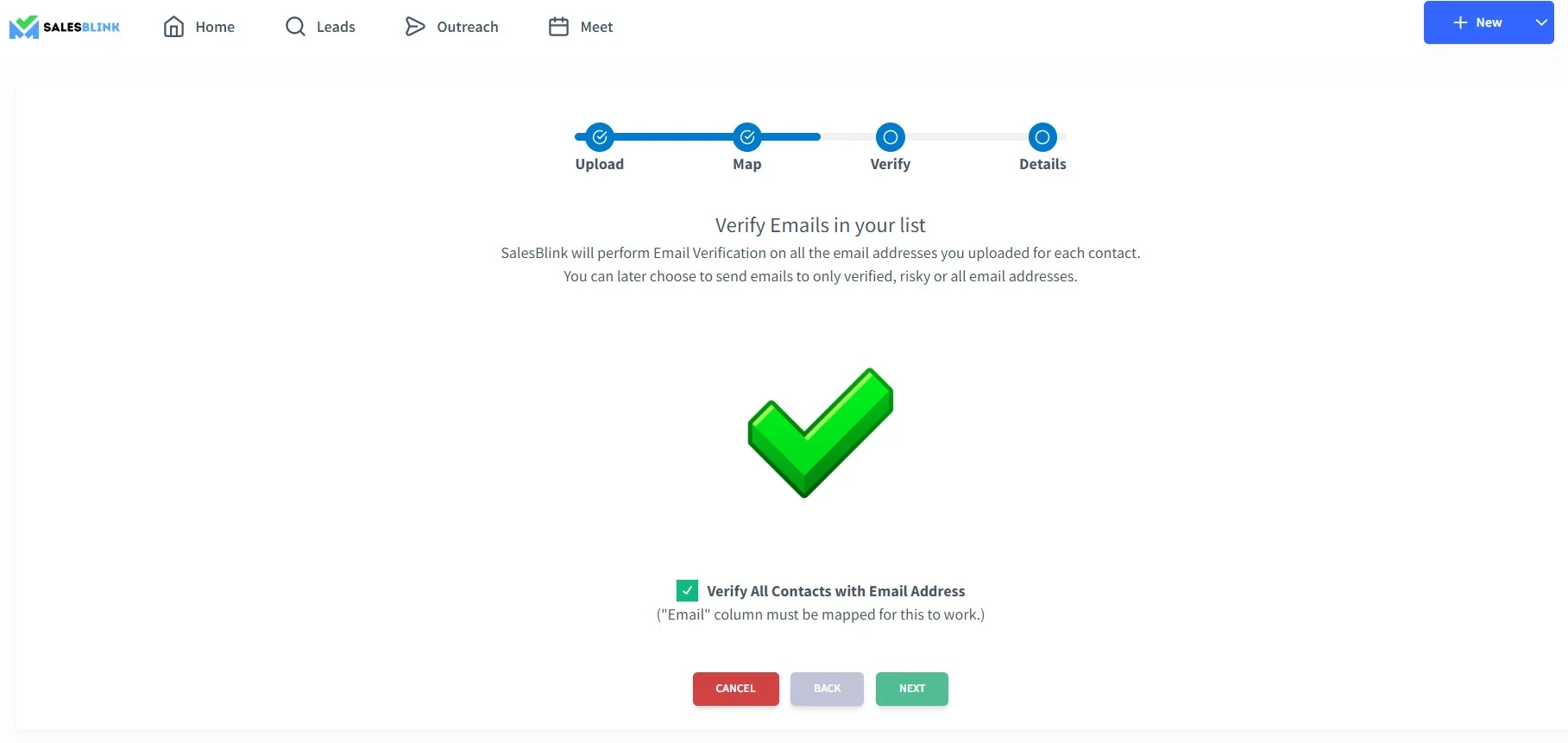The Mini-Guide To Check Email Validity (+Tool Types)
Even though good cold emails have a response rate of 40%, it’s essential to ensure that the email addresses are valid. However, verifying an email address’s accuracy can be difficult. As a result, there can be many problems, such as poor sender reputation and low email deliverability. Therefore, to help you out, this mini-guide will provide some tips on how to check email validity to ensure your emails are reaching their intended destinations.
We’ll cover the basics of email validation and discuss some of the most popular methods for verifying email addresses. You’ll also learn about the importance of using tools for email verification. By the end of this guide, you’ll have the knowledge and tools you need to verify emails effectively.
Table of Content
- Why should you check if an email address is valid?
- How Does Email Address Verification Work?
- What are the benefits of checking email address validity?
- When to validate email addresses?
- How To Check The Validity Of Email Addresses?
- Types of email verification tools
- What to look for when selecting an email verification tool?
- SalesBlink’s Email Verification Tool
- FAQs
Why Should You Check If An Email Address Is Valid?
The main reason to check email validity before emailing is to avoid ruining your sender’s reputation. Sender reputation is a score given to your IP address by an email service provider.
When you send emails to invalid addresses, and if they get bounced, your email service provider will put you under the scanner. A high bounce rate will make your sender score dip, and the email service provider (ESP) can penalize you for your actions and may blacklist you.
You must be wondering what a bounce means.
If you send an email and it fails to reach the recipient, it is called email bouncing.
There can be many reasons for emails to bounce, and they are the following:
1. The email address is non-existent.
2. The recipient’s mailbox is full.
3. The email server is unavailable because of maintenance work or due to a crash.
4. The recipient blocked your email address.
Whatever may be the reason, a high bounce rate can wreck your sender’s reputation, and that can, in turn, negatively affect your email deliverability.
Just in case you are not aware, email deliverability refers to the ability to make emails hit the intended recipient’s inbox.
With a poor sender reputation, your email service provider has a high chance of considering your emails as spam and preventing them from hitting the inboxes of recipients. The emails will go to the spam folder instead of the inbox. When your emails don’t even reach the recipient, your whole email campaign will be a failure.
Therefore, it is the accuracy of the mailing lists that decides the fate of your email campaign.
You can avoid all the trouble when you check for the validity of the email addresses on your list. It is a necessity to verify emails as you have to build your domain reputation so that your emails reach their intended destination whenever you run an email campaign from your IP address. Maintaining sender reputation would require effort from your end.
How Does Email Address Verification Work?
There are different techniques to check the validity of an email address. After the email verification process ends, all the invalid addresses get removed from the list, and you have a clean list for outreach.
Here’s how it works,
1. Email Address Syntax Check
This check removes email addresses that are not formatted correctly.
2. Domain/MX records check
In this check, the email address’s DNS entries get verified. When the domain turns out to be invalid, or an MX entry is not there, the email address gets marked as invalid.
3. Role-Based Account Detection
Sending emails to role-based accounts like info@, sales@, careers@ can be detrimental to your email deliverability. The process of role-based account detection can detect such email addresses and flag them.
4. Disposable Email Address Detection
Disposable or junk collector emails get detected here. These are email addresses created temporarily for sign-up forms asking for a valid email address.
5. Honeypot/Spam Trap Detection
This detects honeypots, spam traps, blacklisted or fake email addresses so that you steer clear of them.
6. Checking DNSBLs and URI DNSBLs for blacklisting
Certain IP addresses used for spamming are present in DNS-based blackhole lists (DNSBL) or Real-time Blackhole Lists (RBL). DNSBLs are used to check email addresses and remove malicious emails in the validation process.
7. Final verification
In the final verification stage, each email address undergoes SMTP verification. In this stage, the tool checks for the mailbox’s existence by pinging the address without sending an email.
What Are The Benefits Of Checking Email Address Validity?
The clear-cut fact is that those who check the validity of the email addresses on their lists and remove the ones that are not valid can enjoy several benefits. Learn more about the benefits of email verification. Here’s how email validity check is advantageous,
1. Reduces Bounce Rates
Once you remove the bad addresses from your mailing list or database, you will be sending emails to genuine recipients. As a result, your bounce rates will be lower and your sender reputation will increase. Since there is a higher likelihood that they will reach the inbox, you can generate more leads, increasing your conversion rate.
2. Improves Sender Reputation And Email Deliverability
As already mentioned, it is your sender’s reputation that affects email deliverability. Your sender reputation has to be good so that your emails reach recipients. Bounces, spam complaints, and emailing to spam traps can severely harm your sender’s reputation. That is why you must check email address validity to maintain a clean list of contacts.
3. Saves Money
While running email campaigns may look free, there is a cost attached to it. Similarly, there is a cost involved in maintaining databases as well. When you send emails to invalid addresses, and they bounce back, you are wasting your money. Also, by not cleaning your list periodically, you are holding on to bad addresses adding to your storage costs. Regular checking of email addresses will help you save a lot of money. Help get accurate statistics
Email bounces dishevel the statistics of the email campaign. It becomes difficult to see what the final result of your efforts is. That is why validation of email addresses is essential. It helps you know in what direction your email campaign is heading.
When To Validate Email Addresses?
Before finding out how to check if an email exists, you should know when to verify them. Here is when you should consider validating your list of email addresses,
1. You have added new contacts to your mailing list.
2. It has been more than one month since the last check.
3. Your bounce rate is on the higher side (ideally, it should be under 5%).
4. The open rates are on the lower side.
How To Check Whether An Email Is Valid?
If you are wondering how to check if an email is valid, there are many ways to do so. You can use the double-opt-in method that prevents people from registering invalid and fake accounts.
Then there is the double typing method whereby the user must enter their email address twice while registering on online forms. It helps in preventing typos and syntax errors.
One of the most reliable solutions for validating email addresses is to use email verification tools.
These tools make the task of verifying email addresses more effortless and faster. It is worth the money you invest in purchasing them.
Email verification tools require you to upload your list of email addresses, and they would deliver the report marking the ones that are risky and undeliverable. You can then remove the invalid ones from the list and proceed with your email campaign.
Most tools are easy to integrate with cold email software and reduce your work of uploading the list of contacts twice.
Tools that check if an email is valid to carry out three types of verification, and they are the following:
1. Syntax check
In this method, the tool checks the syntax of an email address. It ensures that the addresses don’t have any spelling errors, spaces, commas and makes sure that the domain part of the address is in place.
2. Domain check
This email search method involves checking the domain and the recipient’s email address to see if it is working or not.
3. Email Ping
The tool sends a message to the recipient’s server to verify email addresses. It helps determine whether the email address exists on the server or not and if it is currently in use.
Types Of Email Verification Tools
While all the email verification tools aim at removing invalid addresses from the mailing list, there are three main types of verification tools:
1. Bulk verification tools
Bulk verification tools require you to upload a list of email addresses, most often in the form of a .csv file. The tool then checks all the addresses in one go and marks the addresses as valid, invalid, and risky. Bulk verification tools are suitable for those who have a vast database of email addresses.
2. Real-time verification tools
With real-time email verification tools, it is possible to check email addresses when you collect them. The tool catches invalid addresses even before you add them to your list. If a person enters an invalid address in your form, you can find that out instantly using a real-time tool. You can point it out and ask the person to enter their email address again so that you don’t lose a lead.
3. Ongoing/Automated verification tools
Automated verification tools remind when email list cleaning is required or automatically scan your database of email addresses periodically and remove invalid and risky addresses.
What To Look For When Selecting An Email Verification Tool?
Now that you know the different types of email verification tools, here is what you should look for when choosing a tool to check the validity of an email.
1. Accuracy
The tool has to have high accuracy to get the best results. It is the first thing that you should look for while choosing a tool. The one that offers 99% accuracy is a good choice. Many tools also guarantee bounce rates lower than 2% or 3% after they clean the list.
2. Speed
A tool with a low turnaround time is ideal. However, speed matters the most when you have thousands of email addresses on your mailing list. Based on your needs, you can choose your ideal tool.
3. Online service
It is best to choose an online email verification service, i.e., SaaS. It won’t take up space on your computer and does not require you to set it up. Additionally, you can use it anytime you want from any device.
4. Scalability
The tool must be able to verify both single email addresses and large mailing lists because every business has different needs.
5. Integration
Email verification is a part of the marketing and sales process. Therefore, it should be easy to integrate the tool with other platforms like email outreach tools.
6. Multiple validation methods
The tool must carry out several validation methods such as syntax check, domain check, and email ping to verify email addresses so that you get the best results.
Verify Emails With SalesBlink
With SalesBlink, one of the best automated cold outreach tools around, you can easily verify email addresses once you upload a list of contacts. This way you can have a clean list with you and ensure that you send emails to valid addresses.
As a result, your sender reputation will stay intact and you’ll have good email deliverability.

Start Using A Tool To Check Email Validity
In this mini-guide, we explored the different methods available to check email address validity. We have seen that there are several different ways to do this, from the basic manual method to more advanced email validation tools. No matter which method you choose, the important thing is to ensure that the email address is valid before you send any messages. You can maintain a clean prospect list with email verification tools and it helps with ensuring good email deliverability.
Don’t forget to thank us later!
FAQs
Bulk verification tools require you to upload a list of email addresses, most often in the form of a CSV file. The tool then checks all the addresses and marks the addresses as valid, invalid, and risky.
With real-time email verification tools, it is possible to check email addresses when you collect them. The tool catches invalid addresses even before you add them to your list.
Automated verification tools remind when email list cleaning is required or automatically scan your database of email addresses periodically and remove invalid and risky addresses.







